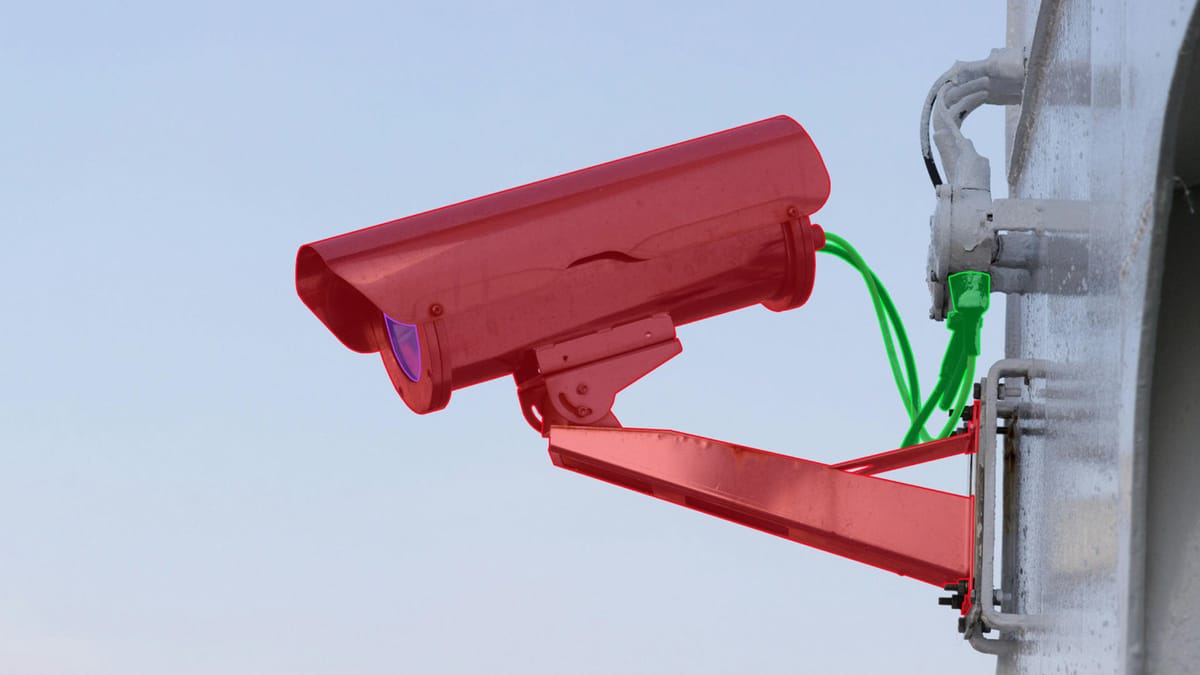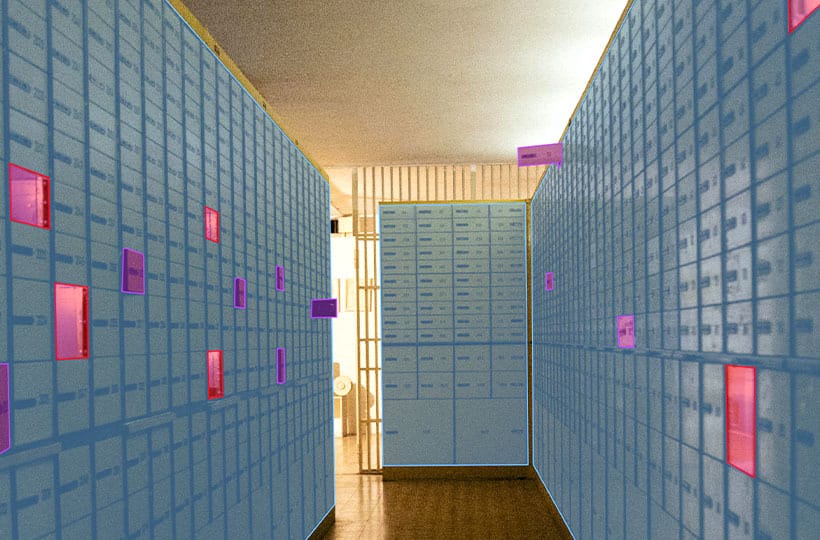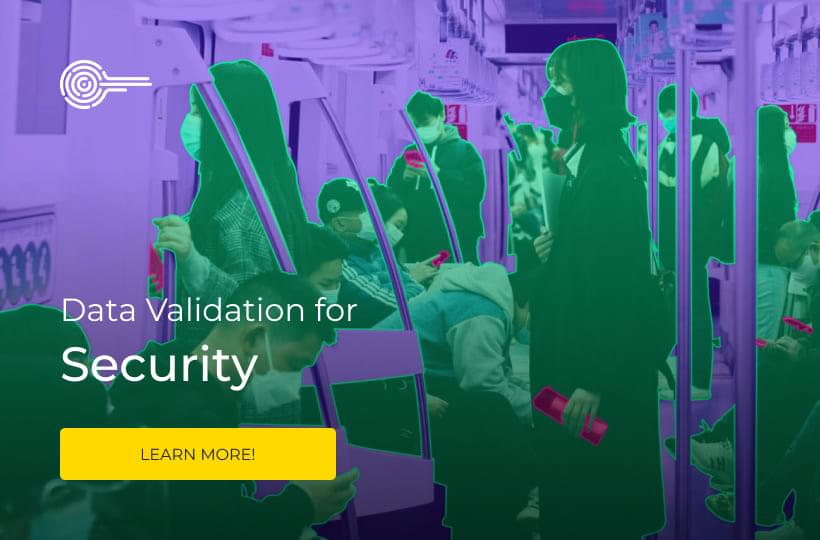Enhancing Security Systems with Image Annotation Services

Security data annotation services are critical for advancing the industry. Leveraging artificial intelligence (AI) and computer vision, our services analyze images to detect threats efficiently. This fosters robust home, public, and cyber security measures. By identifying and labeling various elements such as facial features and weapons, our services streamline threat detection.
Accuracy rate in data labeling for security systems plays a key role. Let's explore how they work and what specific results you can achieve with the right data.
Key Takeaways
- Image annotation services are essential for advanced security measures.
- AI and computer vision combined with expert data annotation significantly enhance threat detection.
- The global AI in security market is set to reach $37 billion by 2026.
- High-quality training data prevents the failure of AI projects.

What Are Security Data Annotation Services?
Security data annotation services are about labeling video and image data for AI systems. This is key for AI to spot and act on security threats. It turns raw footage and images into annotated datasets, helping AI systems understand and analyze data better. This boosts security measures significantly.
Definition and Overview
Security data annotation is about tagging data from security systems like CCTV cameras and biometric scanners. This tagged data is the base for training AI models. These models can then detect patterns, identify objects, and forecast security threats.
The process includes several steps:
- Data collection
- Data cleaning
- Data annotation
These steps can be done manually or with software tools. This ensures top-notch tagging for AI model training.
Importance in Security Systems
The role of security data annotation in security systems is vital. It turns standard security into AI-driven systems. Annotated data enhances threat detection accuracy, quickens response times, and reduces risks.
For example, annotated data helps AI models spot suspicious activities in real-time. This enables faster and more effective responses:
| Annotation Type | Application | Benefit |
|---|---|---|
| Image Classification | Identifying objects and individuals in video footage | Quick identification and tracking |
| Bounding Boxes | Marking regions of interest | Focused monitoring |
| Semantic Segmentation | Pixel-level annotation | High precision in object recognition |
Security data annotation makes AI models better at handling complex data. This leads to a strong and responsive security system. It's essential for protecting both physical and digital spaces.
How Image Annotation Works
Image annotation is vital in the security field, allowing AI to spot and respond to different situations. It combines manual and semi-automated approaches for precise and efficient data annotation. This meets the unique demands of security.
Types of Image Annotations
Diverse image annotation types cater to specific security requirements:
- Bounding Box: Essential for detecting unauthorized access by identifying objects.
- Polygon Annotations: Key for spotting irregular shapes and multiple objects, vital in anomaly detection.
- Landmarking: Helps pinpoint specific features, aiding in facial recognition and other detailed tasks.
Techniques Used for Annotation
High-quality security incident annotation relies on a mix of manual and automated methods:
- Manual Tagging: Done by experts for high accuracy in complex tasks.
- Semi-Automated Tools: These tools quicken the process, maintaining precision. They use pre-labeling to cut time and costs by up to 50%.
- Quality Assurance: Strict benchmarks, consensus, and review ensure the data's reliability.
Tools like Keylabs streamline image annotation. They support various objects and labels per image. They also offer customization to meet specific needs. These approaches improve the effectiveness of security systems. They create annotated datasets essential for training advanced AI models.
Benefits of Using Security Data Annotation Services
Security data annotation services offer significant advantages for surveillance systems and AI model training. Detailed annotation enhances the precision and efficiency of surveillance systems. Let's dive into the specific benefits.
Improved Accuracy in Surveillance
Security surveillance data labeling significantly boosts accuracy in threat detection and behavior recognition. Annotated data enables systems to operate in real-time, spotting threats and anomalies with precision. Outsourcing data annotation can cut costs on employee training and infrastructure. It also ensures data security, reducing breach risks.
This approach not only enhances surveillance system efficacy but also promotes proactive security management.
Enhanced Training for AI Models
High-quality threat detection data annotation is vital for AI model training. Accurate annotations improve machine learning model robustness, leading to enhanced pattern recognition and anomaly detection. Outsourcing annotation projects to dedicated teams offers faster turnaround and higher quality data.
This quality improvement reduces machine learning model error rates. It allows businesses to trust their AI systems for critical security tasks. Annotating data through professional services also enables companies to focus on their core competencies, boosting performance and competitiveness.
Key Industries Utilizing Security Data Annotation
Security video annotation is critical in strengthening safety measures across various sectors. It enhances the precision and effectiveness of automated security systems by accurately tagging and categorizing visual data. This section explores how government entities and the retail sector employ security video annotation to improve their operations.
Government and Law Enforcement
Government bodies and law enforcement agencies heavily rely on security video annotation to boost public safety and investigative processes. Annotated video footage aids in monitoring public areas, spotting suspicious activities, and conducting detailed investigations. Advanced annotation techniques enable these entities to quickly address threats and solve crimes more effectively.
Retail and Loss Prevention
The retail sector uses security video annotation to cut down on losses through better surveillance. Annotated footage helps in detecting shoplifting, fraud, and other criminal activities in stores. By optimizing store management and improving security, retailers can significantly reduce theft and enhance operational efficiency. This application highlights the significant role of precise video annotation in strengthening security protocols.

Choosing the Right Annotation Service Provider
Choosing the right annotation service provider is key to your AI project's success. Data annotation is vital for AI model efficiency and effectiveness, critical in security applications. We'll look at important factors to consider, including quality and expertise.
Factors to Consider
Several key factors should guide your decision when picking a data annotation service provider. Accuracy is essential for reliable security log analysis annotation. Providers like Keymakr ensure over 95% accuracy with multi-tier quality checks. Compliance with data privacy laws is also critical. Outsourcing data annotation can cut costs by up to 60% and ensure data protection regulations like GDPR.
Challenges in Security Data Annotation
Security data annotation is key for training precise machine learning models. Yet, several hurdles must be overcome to guarantee these models' effectiveness and reliability.
Data Privacy Concerns
Data privacy is a major challenge in security image annotation. The need to handle sensitive images and videos with care demands strict data protection. Companies must adhere to global data security standards to avoid breaches. This includes using VPNs and robust business continuity plans for secure data processing.
Complexity of Scenarios
Real-world security scenarios complicate security image annotation. They require advanced techniques and experienced professionals for accurate data annotation. High-quality tools and technologies are vital for managing large data-mining teams and maintaining consistent data tagging quality. This is critical for machine learning model success, as their accuracy depends on the quality of training data.
Further, the cost of necessary annotation tools can be high. Many companies struggle with budget constraints, making it hard to build top-notch infrastructure for annotation tasks.
Outsourcing annotation services can overcome these challenges. It improves quality, scalability, speed, and security. Outsourced teams offer scalable solutions and ensure projects are completed efficiently and securely. Their skilled professionals guarantee high accuracy and efficiency, making them essential for large-scale annotation projects.
Future Trends in Security Data Annotation
Security data annotation is rapidly evolving, driven by technological advancements and the growing need for detailed security analysis. We will explore the trends that will define this field's future.
Integration with Machine Learning
The fusion of machine learning with security image processing is transforming data annotation. Machine learning algorithms are now automating the annotation process, significantly reducing manual effort. This not only speeds up the process but also ensures annotations are more accurate and consistent.
As domain-specific annotation solutions emerge for sectors like healthcare, finance, and retail, annotations will become more precise and relevant. Ensuring the quality and fairness of these machine-generated annotations will be key.
Real-time Data Processing Innovations
Innovations in real-time data processing are enabling security systems to respond faster and more effectively. Collaborative annotation platforms are making real-time collaboration, version control, and quality assurance easier across multiple annotators. This integration enhances the overall process.
Privacy-preserving annotation techniques, such as differential privacy and federated learning, are addressing data privacy concerns. These innovations protect sensitive information while allowing for thorough data analysis.
| Aspect | Current | Future Trend |
|---|---|---|
| Annotation Process | Manual Effort | Automated with ML |
| Domain-Specific Solutions | Generalized | Tailored for Industries |
| Data Privacy | Basic Measures | Differential Privacy |
| Collaboration | Stand-alone Efforts | Real-time Platforms |
| Market Growth | USD 4.28 Billion (2022) | USD 8.22 Billion (2028) |
The Impact of Annotation on Security
Throughout this article, we've seen how security data annotation services boost the accuracy and efficiency of security systems. These services are key in training AI models for tasks like surveillance and threat detection. They are vital in various industries, from government to retail, highlighting the importance of precise data annotation.
Businesses should leverage the latest in data annotation to strengthen their security. Proper data management can prevent up to a 15% loss in income due to human errors. It's time for businesses to adopt robust security data annotation services to protect against threats and ensure growth.
FAQ
What are Security Data Annotation Services?
Security Data Annotation Services label video and image data for AI systems. This process is key to training machine learning models. It helps systems understand and analyze security footage and images, leading to better security solutions.
Why are Security Data Annotation Services important?
These services turn standard security operations into AI-driven systems. They identify and mitigate risks before they happen. By accurately labeling data, they improve threat detection and response times.
What types of image annotations are used in security systems?
In security, image annotation uses bounding box, polygon, and landmarking techniques. These pinpoint specific features in images. They help detect and identify critical elements that may indicate threats.
Which industries benefit most from security data annotation services?
Government bodies, law enforcement, and retail sectors benefit the most. Government uses it for public safety and investigations. Retail uses it to prevent shoplifting and fraud.
What factors should be considered when choosing a security data annotation service provider?
Look at the service's accuracy, data privacy compliance, technological expertise, and scalability. Case studies and client reviews can reveal the quality and reliability of their services.
How do security data annotation services improve the accuracy of surveillance systems?
Detailed annotations enhance surveillance system accuracy through precise threat detection. This real-time recognition ensures robust pattern recognition and anomaly detection. It's vital for proactive security management.
What are the primary challenges in security data annotation?
Data privacy is a major concern due to the sensitive nature of images and videos. Real-world scenarios also pose challenges in annotation accuracy. Sophisticated techniques and expertise are needed to address these complexities.
What are some future trends in security data annotation?
Future trends include integrating machine learning for autonomous threat detection. Innovations in real-time data processing will enable security systems to act swiftly and efficiently. This marks significant progress toward intelligent security solutions.
Can you provide examples of successful implementations of security data annotation?
Airport security has seen success in suspect tracking and reducing false alarms through high-quality annotations. Retail has also benefited from automated surveillance systems, significantly reducing theft and improving safety.
How do security data annotation services enhance AI model training?
Accurate data labeling creates robust AI models that recognize patterns and detect anomalies. This leads to better training outcomes. It enables the development of sophisticated security measures for proactive threat management.

